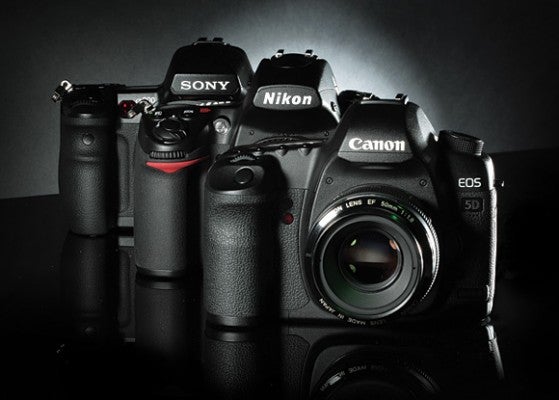Canon EOS 5D Mk.II vs Nikon D700 vs Sony A900: Image Quality
Image Quality
Noise
The D700 has received much acclaim for its low-light performance and, as our tests demonstrate, the other two cameras can’t quite manage to better it. At higher sensitivities, images from the D700 are clean and detailed, though the extra resolution of the other two cameras means that finer detail is ultimately better resolved. The EOS 5D Mark II shows little chroma noise at higher settings, though with good detail remaining, while the a900 is overall the noisiest. As many photographers only ever shoot towards the lower end of the ISO scale this would be easy to forgive, though the a900 begins to show noise at a lower ISO threshold than the others.
Exposure
In the studio, the D700 was the only camera to produce a relatively light midtone, with the other two cameras hitting the middle pretty accurately. What this means is that shadow detail is retained better at default, at the expense of highlight detail. Despite this, exposures are generally accurate. The a900 underexposed slightly more frequently than the 5D Mark II, but this was only the case in certain tricky conditions.
Colour and White Balance
None of the three cameras produces images with any objectionable colour or white balance issues, though there are differences. Typically, the lighter midtone on the D700 affects colour, while colour from the EOS 5D Mark II is excellent and vibrant, and without a doubt a strength of the camera. The a900 also showed very good colour, with a slightly warm white balance system. Under artificial lighting the D700 performed similarly to the D90 and D300 models, making the greatest attempt to neutralise colour casts.
Detail and Sharpness
Unlike with cameras whose pixel counts vary little from each other, the resolution advantage of the a900 and 5D Mark II over the D700 is obvious. Images are larger and more detailed, but this is only appreciated at 100% viewing and printing sizes. The detail all three cameras can capture is impressive to say the least, though at higher sensitivities only the D700 manages this without degrading the image too much. Both the a900 and 5D Mark II are capable of delivering superb detail throughout the full range of their sensitivities, though the a900 did seem to have a slight edge when images were downsized to match those from the EOS 5D Mark II.
Throughout this test, I used each camera with fast 50mm prime lenses, each manufacturer’s professionally oriented 24-70mm optics, and a handful of other lenses I happened to have to hand. Stopped down to f/11 each of the 50mm prime lenses delivers superb detail, with the Sony 50mm f/1.4 optic in particular shining. None of the 24-70mm lenses suffered from distortion to any degree of concern, and all did an excellent job to suppress chromatic aberrations.
Raw images from the D700 were very workable and showed good latitude for processing, though the other two cameras, despite having much smaller photosites, offered impressive headroom for dynamic range adjustments. This allowed detail in both highlights and shadows to be brought back from the brink.
Click here for Sony a900 sample images
Click here for Nikon D700 sample images
Click here for Canon EOS 5D Mark II sample images





